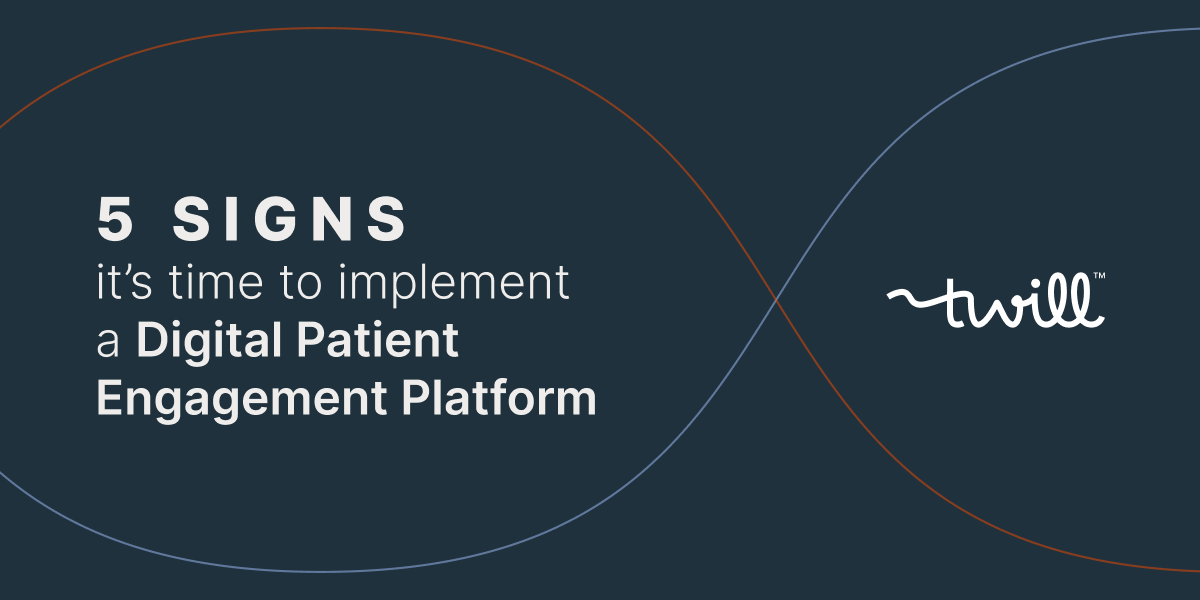
In the first blog of a three-part series, we discussed the challenges faced by the pharma industry when exploring digital patient and healthcare professional (HCP) solutions. A common misconception is treating this decision as solely a software issue, when, in fact, it’s primarily an activation, engagement, and behavior change challenge that must deliver a compelling ROI. Software applications are just one component of the digital patient experience, and as we’ve all experienced, many software solutions fail to deliver activation, engagement, behavior change, and ROI.
On the other hand, a Patient Engagement as a Service (PeAS) platform goes beyond software and certainly is not an app. It is a set of orchestrated solutions that configures a single and unique patient journey with the goal of removing barriers and resolving pain points for that patient through the use of data. It combines data from within and outside the solution to deliver real-time actions to optimize activation, engagement and health outcomes. Moreover, the data is constantly updated while building on terabytes of existing information from millions of previous users.
For pharma looking to evaluate potential solutions and partners, here are 5 clear indications that a PeAS platform may be what you need:
1. You need to be in the market in 2-4 months, for under $500K and scale for under $1-2M per yearMost pharma prefer to start their digital journey with a Proof of Concept (POC) pilot that generally takes 6-12 months to complete. So we offer this as our entry level service so that they can quickly test and learn and use real patient data for decision making. We offer this service for between $250-500K, and can be in-market testing hypotheses with the patients and the pharma client within 2-4 months depending on the requirements for our digital solution configuration. We have done this in many therapeutic areas: migraine, multiple sclerosis, atopic dermatitis, asthma, rheumatoid arthritis, diabetes, hypertension, breast cancer, lung cancer, pregnancy, major depressive disorder, and generalized anxiety disorder. And we have done it in many different markets, including: the US, Germany, France, Italy, UK, and Spain, as well as some other countries.
Once the POC is completed, you need to move to scaling the digital solution, which will require adjustments, refinement, and additional features based upon the patient feedback obtained in the POC. This requires your digital partner to move quickly, making these changes, and bringing the digital solution to market to deliver value, at a reasonable price to yield the 10:1 ROI.
2. Your primary challenge is finding, activating and engaging patients to drive certain behaviorsAs outlined in a previous article, Activation: The Misunderstood Foundation of Engagement, pharma clients generally turn to their ad agencies, not their consultants or tech companies for finding and activating patients. We have consistently outperformed ad agencies, achieving 5 to 10 times better performance based upon KPIs, in finding and activating patients through social media and other digital channels.
Our experience is that you can’t measure your ability to engage patients based upon a POC of a few dozen patients. To truly optimize your digital solution for activation and engagement you must provide it to tens of thousands of patients and do so through a rigorous A/B testing approach where you are constantly testing and changing the product to optimize performance. We also outlined in a previous article (A Digital Health Platform Without Engagement is Useless)
3. You understand that data infrastructure plays a LARGE role in delivering valueWe find all of our pharma partners want data. It can be patient journey data, symptoms, side effects, pharmacovigilance data, outcomes data, claims data, etc. Our philosophy is that the patient owns their own data, and if companies provide the patient a compelling value proposition then they will share the data with companies to use in ways that deliver value to them and to the company. So we find that patients readily share data with us in the normal course because of the value we deliver to them. And they can consent to share data with the pharma companies as well as long as the value proposition presented to them is compelling.
4. You appreciate that content needs to be evergreen to achieve desired outcomesPatients seek variety in their digital experience, as observed from their interactions with popular platforms like Instagram, Facebook, and TikTok. Therefore, we provide a dozen varieties of content to patients on a recurring basis in their feed to attain long term engagement. We find that by doing so, we can achieve the same level of sustained, long-term engagement that these digital social media champions achieve. This is something addressed at length in an article, A Digital Health Platform Without Engagement is Useless.
5. You are seeking a solution with high regulatory rigor, that can also own and manage risksIs the final deliverable of a high enough quality that it can meet the FDA standards for Good Manufacturing Practices (GMP) with a Quality Management System (QMS) that meets privacy, safety, and operating standards that will survive an audit? And who is the “manufacturer” of the digital solution? The consultant? Or the pharma company? What level of regulatory risk is the pharma company taking? How about pharmacovigilance? Twill has one platform, and it meets the FDA, GMP, and QMS requirements. Twill is the legal manufacturer of record and takes and manages all those risks.
If your organization struggles with digital patient engagement and these five indicators resonate with you, consider a PeAS platform.
